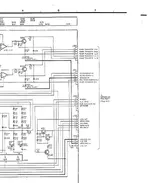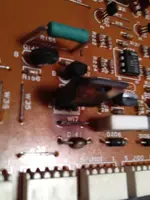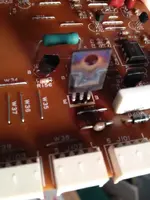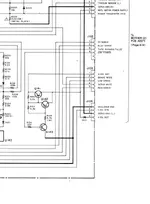G
Gavin137
New member
Maybe - I sure hope not. I recently decided to try to install led lights in the vu meters of my 388 as all the light burned out a long time ago. This 388 has been sitting for a few years, but I fired it up a few days ago to put some old tracks I had into Pro Tools. So it was working fine before I decided to open it up.
After getting the vu meters out, but leaving them still wired up I powered up the machine, thinking to measure the voltage of the lights so I could figure out what resistors I would need for the leds. As soon as I powered it up there was a buzzing sound from the area of the reel motors, the vu meters all pegged, and I later noticed that the first fuse in the fuse pcb had blown. I replaced the fuse and turned it on again, but the fuse blow almost immediately. I think I might have inadvertently shorted something out by having the meter circuit boards touch something they shouldn't have. What can I say - I'm an idiot!
Following the wire from the fuse led me to the reel servo pcb, where I discovered a component (Q141, transistor?) that looked burned, as well as a resistor very near it. With very limited experience fixing this kind of thing, I'm wondering if I should try to replace those burned components and see if that fixes it, or if it is likely that there is another root cause why those parts burned.
I'm totally bummed that I have screwed up my perfectly good 388, and I would really appreciate any help I can get here to fix it.
After getting the vu meters out, but leaving them still wired up I powered up the machine, thinking to measure the voltage of the lights so I could figure out what resistors I would need for the leds. As soon as I powered it up there was a buzzing sound from the area of the reel motors, the vu meters all pegged, and I later noticed that the first fuse in the fuse pcb had blown. I replaced the fuse and turned it on again, but the fuse blow almost immediately. I think I might have inadvertently shorted something out by having the meter circuit boards touch something they shouldn't have. What can I say - I'm an idiot!
Following the wire from the fuse led me to the reel servo pcb, where I discovered a component (Q141, transistor?) that looked burned, as well as a resistor very near it. With very limited experience fixing this kind of thing, I'm wondering if I should try to replace those burned components and see if that fixes it, or if it is likely that there is another root cause why those parts burned.
I'm totally bummed that I have screwed up my perfectly good 388, and I would really appreciate any help I can get here to fix it.







 . No offense.
. No offense.